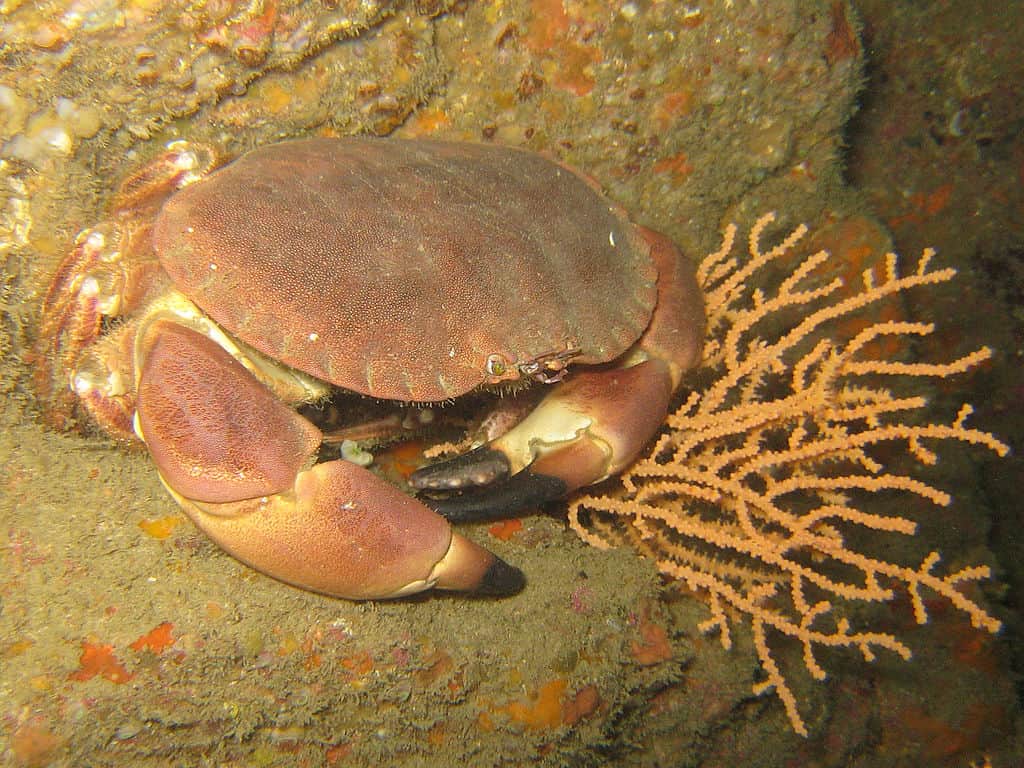Archaeologists are finally giving proper recognition to this extinct branch of humanity. A new study found Neanderthals had a taste for cooked seafood — specifically crabs. Researchers discovered a group of Neanderthals living 90,000 years ago in a seafront cave regularly caught crabs, roasting them on coals and then eating the cooked flesh.

This finding overturns the previous notion that a taste for seafood was one of the important factors that made our species, Homo sapiens, smarter than other prehistoric humans, as some studies had previously suggested. It also puts another nail into the coffin of the “primitive Neanderthal” theory: all evidence suggests they were every bit as smart, able, and sophisticated as our ancestors.
Neanderthals died out around 40,000 years ago, while Homo sapiens developed and thrived. Scientists are still studying why they went extinct.
“Our results add an extra nail to the coffin of the obsolete notion that Neanderthals were primitive cave dwellers who could barely scrape a living off scavenged big-game carcasses,” study author Dr. Mariana Nabais, a researcher at the Catalan Institute of Human Paleoecology and Social Evolution in Tarragona, Spain, said in a statement.
Craving for seafood
Archaeologists excavated a cave located about 30 kilometers south of Lisbon, just five meters above sea level, and found the remains of shellfish. There were clams, mussels, and limpets, but shell and pincer scraps from the brown crab (Cancer paragus) were the most common. The species is still commonly consumed in Portugal, Spain, and Italy.
The study found that Neanderthals were mainly after larger adult crabs, chosen because of their size, with a shell about 16 centimeters wide. Each crab would have provided 200 grams of meat. Currently, crabs are considered to enhance healthy living due to their high-quality and low-calorie protein and many vitamins and minerals and would have been a valuable source of nutrition for the Neanderthals.
Analyzing the patterns of the shells, the researchers discarded the possible involvement of other predators such as birds and rodents. The marks on the shell found at the cave are also very similar to those produced when eating crab today, they said. Although Neanderthals would have used stone tools rather than cutlery to crack open the crabs.
Crabs are evasive and hard to catch, but Neanderthals could have collected them from low tide pools in the summer, the researchers said. They also identified black burn marks on the shells, which suggests that the crabs were roasted on hot coals at temperatures of between 300 and 500 degrees Celsius. Once cooked, they would crack open the shell to access the cooked flesh.
“Together with the associated evidence for the large-scale consumption of limpets, mussels, clams, and a range of fish, our data falsify the notion that marine foods played a major role in the emergence of putatively superior cognitive abilities among early modern human populations of sub-Saharan Africa,” Nabais said in a statement.
While they don’t know whether they chose to eat crabs just for the taste and nutrition or whether they attached any cultural meaning to it, the researchers said this is another piece of evidence that Neanderthals were more sophisticated than previously believed. Other studies in recent years have found evidence of an artistically carved bone and fiber technology used by Neanderthals.
The study was published in the journal Frontiers in Environmental Archaeology.


